Drummond Starts with Sizeable Lead
Sooner Survey: Volume 36 No. 1 | February 18, 2025
By Pat McFerron, President
Cole Hargrave Snodgrass & Associate
![]() @McFerron
@McFerron
Astute observers know a poll is but a snapshot in time. Too often, they are used as a predictor, when reality is, they are providing the current state of play and provide data for understanding the current political environs. And the current state of play in Oklahoma reveals Gentner Drummond currently dominates the landscape and is becoming better defined every day.
Almost half of Oklahoma’s Republicans have a favorable impression of Drummond (49%) and only 13% hold a negative opinion. The balance either have no opinion (21%) or do not recall hearing the name (17%). Drummond’s overall numbers have remained fairly consistent among Republicans over the last few years, though his “strongly favorable” number has continued to climb, showing a strengthening in his definition. In addition, Drummond’s numbers improve among key elements of the GOP electorate. For example, among the 40% of respondents who have voted in at least 4 of the last 5 Republican primaries, his favorable sits at 62%. Among the 27% watching Fox News at least an hour a day, he is a 56% favorable. Unique to Drummond is that he does equally well in both the Tulsa and Oklahoma City media markets, hitting 50% favorable in both.
With soft-name recognition of 83%, Drummond is much better known than two of the most oft-cited opponents (Charles McCall (11% Favorable / 6% Unfavorable; 34% soft-name recognition) and Chip Keating (8% Favorable / 5% Unfavorable; 34% soft-name recognition). It should be noted that at the time of the study, neither had officially announced any candidacy for Governor and we know that being undefined is preferable to being ill-defined.
The one potential candidate tested who does rival Drummond in name identification is Ryan Walters, the State’s Superintendent of Public Instruction. With a soft-name ID of 81% and a hard name-ID of 66%, Walters divides Republicans. Just three-in-ten Republicans have a favorable impression of Walters while 36% have an unfavorable impression of him. Perhaps most striking is that almost twice as many Republicans have a strongly unfavorable impression of him (25%) as have a strongly favorable one (13%). Walters’ numbers continue to worsen, even among Republicans. While we have conducted other studies in which Walters was a net negative among the Republican sub-sample, this is our first survey of at least 500 interviews to show this. Clearly, Walters’ recent public fight with Stitt which played out while this was in the field has not helped him.
Walters does have some strengths. Among the 49% identifying as Trump Republicans, he is a net positive (38% Favorable / 27% Unfavorable) but does very poorly among the 42% who choose the title of Traditional Republicans (23% Favorable / 46% Unfavorable). Walters is clearly anchored on the right, sporting a 42% Favorable among the 51% of Republicans identifying as “very” conservative, but is negative among the 24% saying they are “somewhat” conservative (23%-35%) and does abysmally among the 19% laying claim to the title of “moderate” (9% Favorable / 69% Unfavorable).
As primary participation increases, both his favorable and unfavorable ratings escalate. Among those who have voted in at least four of the past five primaries, he is still negative (36% Favorable / 43% Unfavorable).
When looking at a 4-way ballot with all of those names included, the likely primary voters break strongly for Drummond (44%) putting him a full 30-points ahead of Walters (14%) with both Keating (6%) and McCall (5%) in single digits.
Drummond simply dominates all parts of the electorate at this time, sitting at 44% in the Oklahoma City media market, 43% in Tulsa, and 46% when combining the minor media markets that comprise 16% of the voters. Drummond achieves 50% when looking at 4+ primary voters – which is remarkable given that 26% of the voters remain undecided.
Drummond’s lead does not seem to be based solely on name ID. In fact, among the 18% of Republicans who recognize the names of all four candidates, Drummond is at 51%, still far outdistancing Walters (14%) and both McCall (10%) and Keating (10%).
In a contest without Walters, Drummond does achieve 50% and we see both McCall and Keating at 7%. Fully 43% of those voting for Walters in the other ballot test opt for Drummond in the three-way contest, while 30% move to undecided. In this contest, we see much of the same dynamic: Drummond performing even better among the most frequent primary voters, hitting 60% among those watching Fox News two plus hours a day, etc.
While this polling data shows where the contest is today, the election is not today. It does show that it may be very difficult for Ryan Walters to re-define himself as it appears voters – even Republican primary voters – have set opinions on him. Drummond’s numbers appear a little more malleable, and Keating and McCall are largely blank slates.
Looking back at the last open gubernatorial contest, we can see that things can change during a course of campaign. In a survey conducted early in that cycle, Mick Cornett was in the top spot at 29% with Todd Lamb at 22%, Gary Richardson at 9%, Dan Fisher at 4% and Kevin Stitt and Gary Jones both at 1%. In that primary, Cornett finished at 29%, Lamb improved a few points to 24% and Richardson and Dan Fisher traded places. The real outlier was Kevin Stitt who went from that 1% to 24% and edging Lamb out for the spot in the runoff.
While the 2018 cycle showed the ability for someone to increase their vote share, it did not show any decrease in support. As such, the 2026 dynamic is different. No candidate in 2018 was in as strong of a position as is Drummond. In 2018, Stitt’s campaign was able to build a coalition, it did not have to tear apart an existing one. That is not the case in 2026.
◊


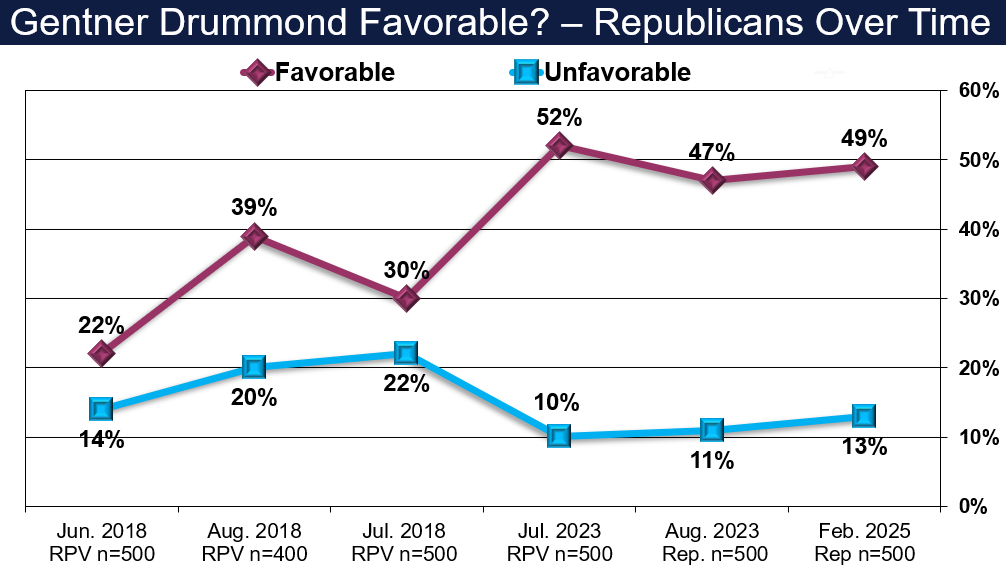
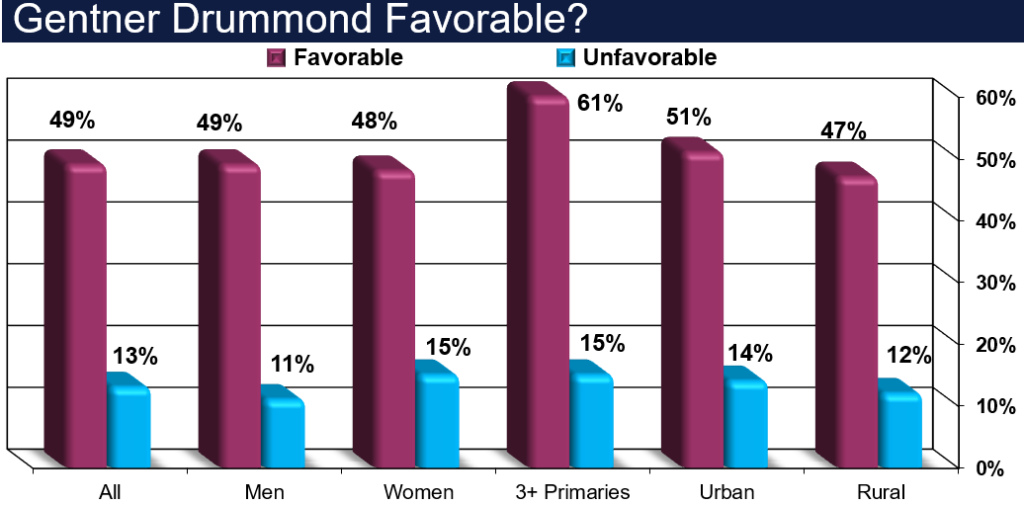

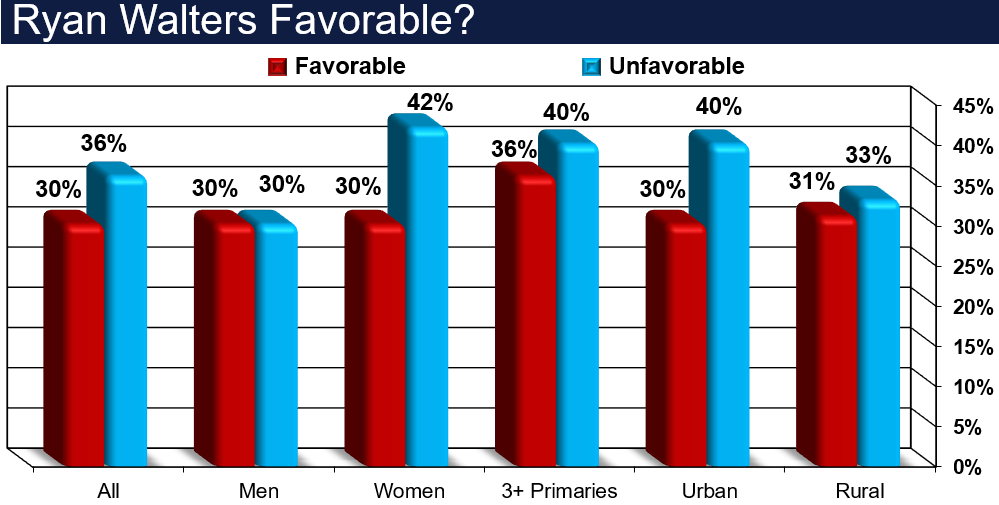
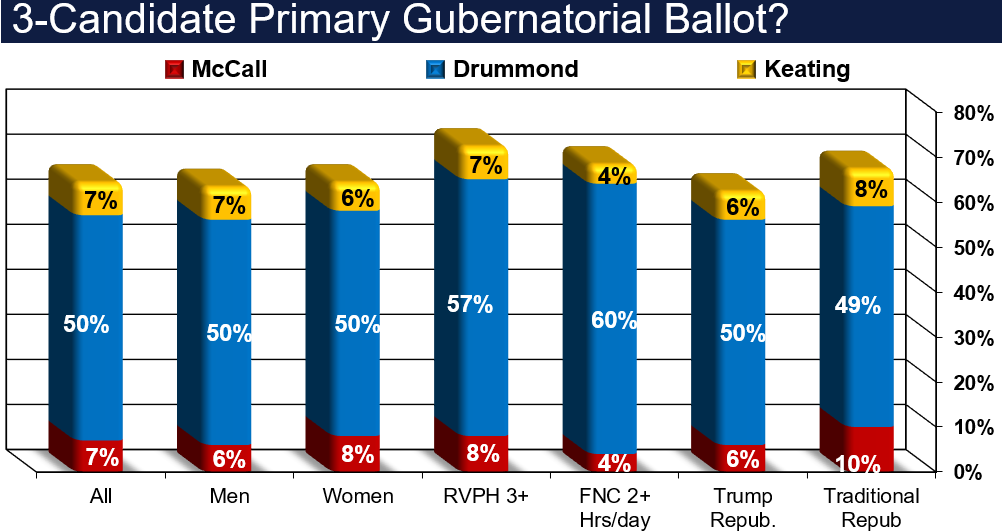
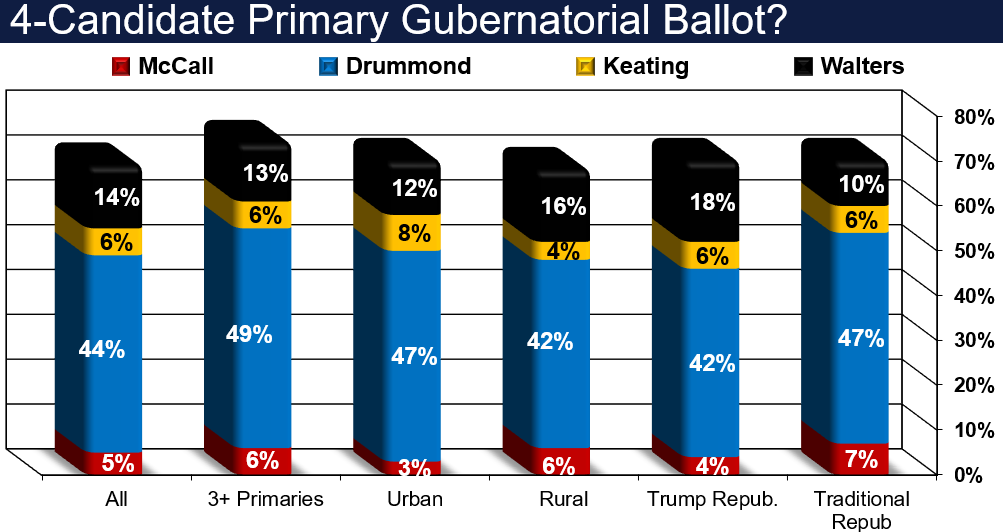



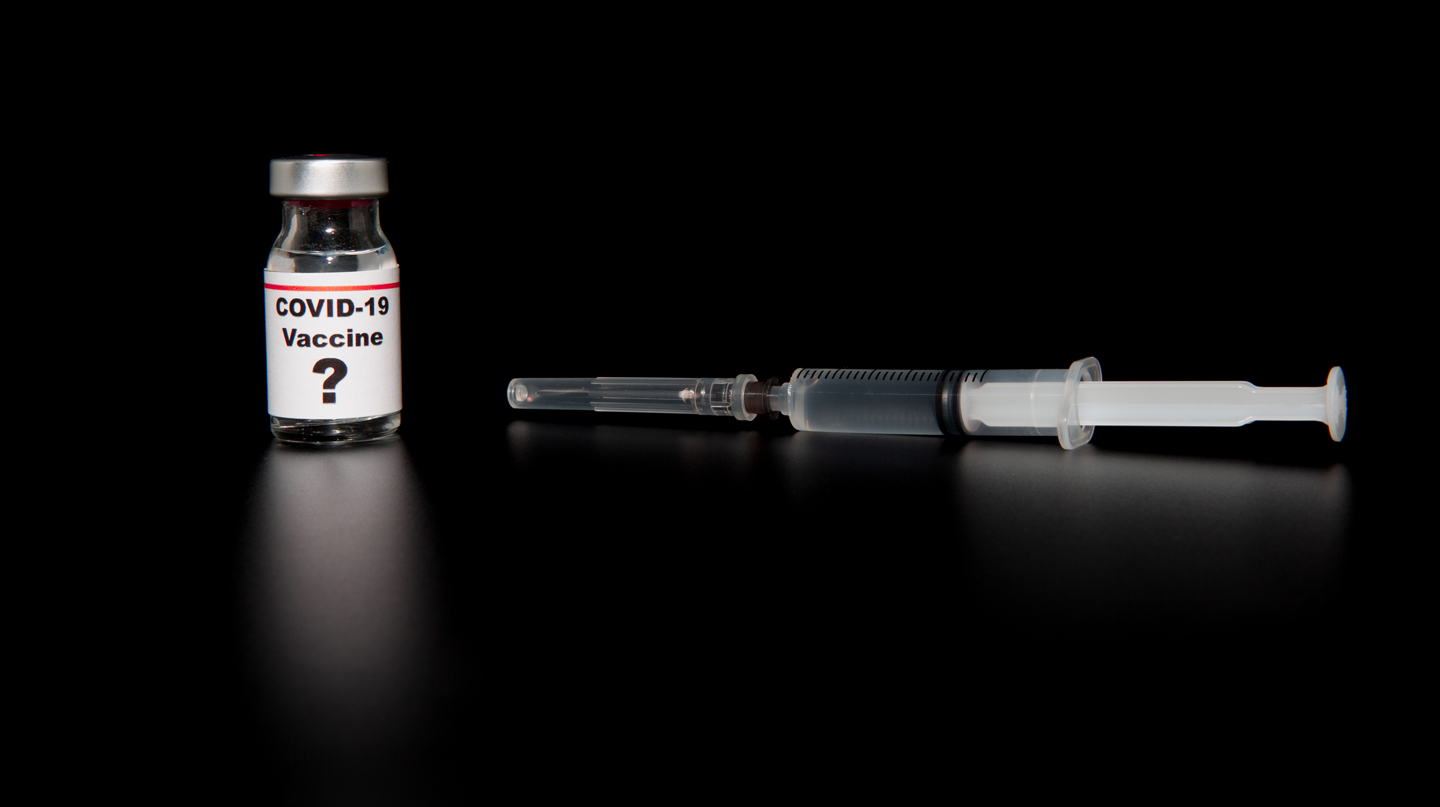

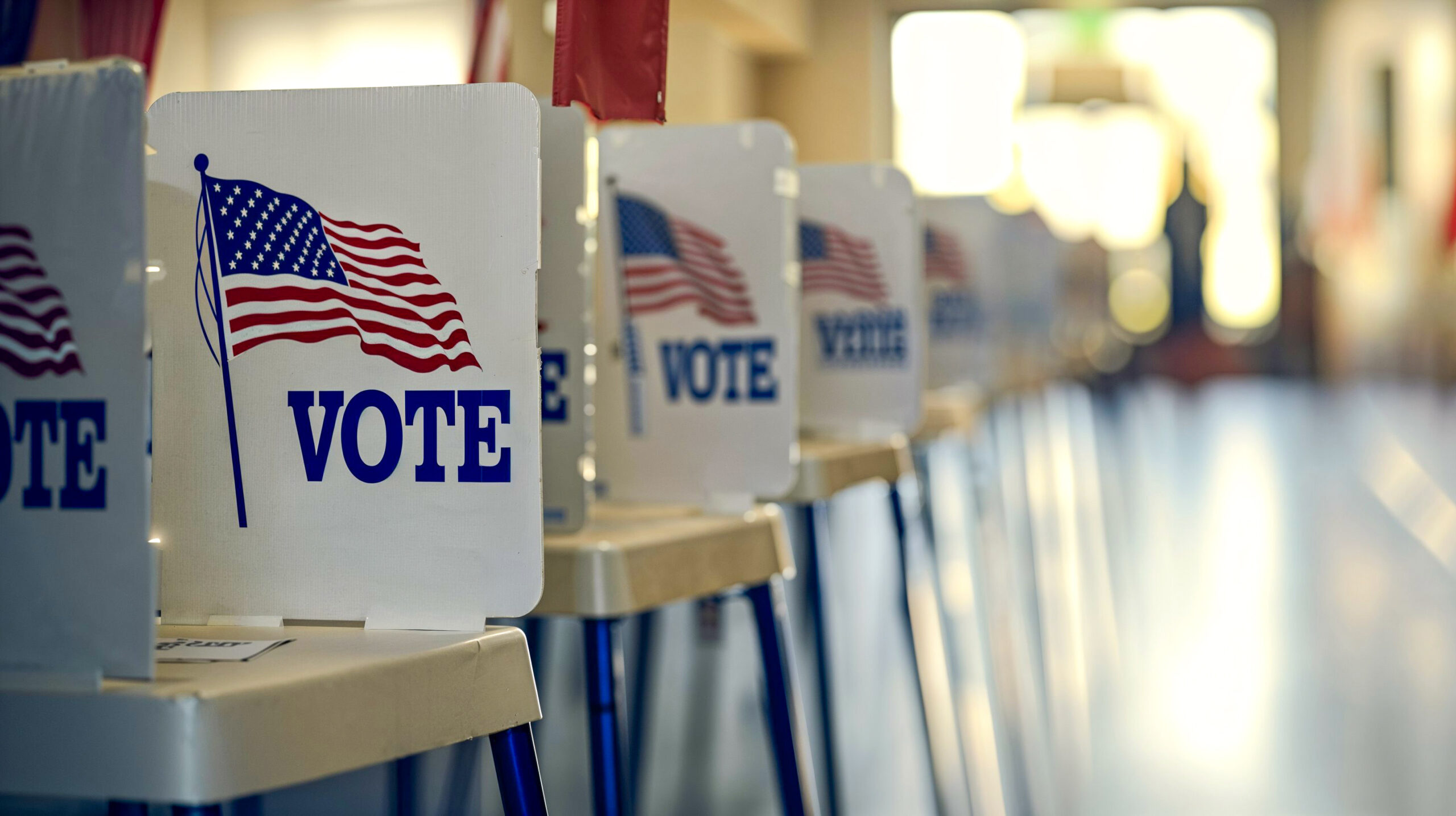
Recent Comments